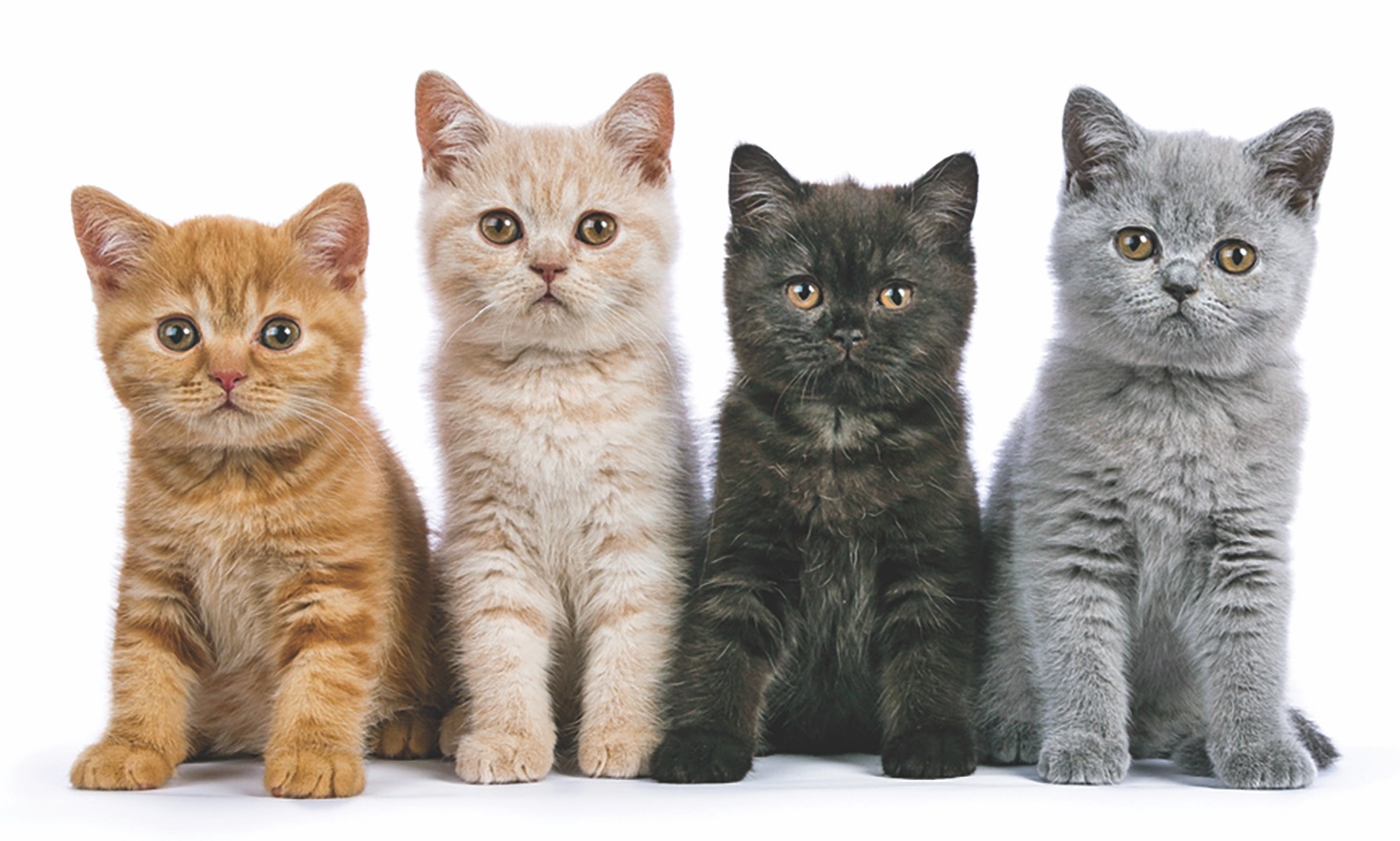Ask any veterinary or shelter staff person and they will tell you, “Orange cats are sweet,” and “Calicos and tortoiseshell cats are tough.” These are anecdotal responses, but some studies support them.
A study at the University of California at Berkeley from 2012 queried 189 cat owners on cat behavior and personalities, and one at the University of California at Davis in 2015 evaluated 1,274 owner surveys on cat behaviors. In both studies, calicos and tortoiseshell cats rated as among the most aggressive, both at home and at veterinary visits. Orange cats, particularly males, tended to head the friendly lists.
It’s important to understand that many factors contribute to a cat’s individual personality. The old “nature vs. nurture” arguments come up right away. A kitten with a friendly sire and dam has a better chance of being a sweet cat than a kitten with very aggressive parents. At the same time, feral kittens who are socialized and raised with people often turn out to be quite friendly.
No Cookie-Cutter Cats
“My experiences with my personal cats don’t fit the studies,” says Deb M. Eldredge DVM (Cornell 1980). “I have had two orange male barn cats. Firecracker was a total sweetie, but Ziggy remains the only animal I have had who viciously attacked me. My black female house cats (Jenny and Venus de Milo) were wonderful, and my tortoiseshell with a tuxedo, Samantha, was a dearly beloved companion for 22 years.”
Among purebred cats, some breeds have been selected for sweetness and others for being clever. Think Persians or Ragdolls vs. Siamese. Longhaired cats in general have a reputation for being mellow or lazy, working as excellent “lap cats.” Siamese and domestic shorthairs are known for being easy to train and for mastering complicated behaviors, not always to their owners’ delight.
White cats tend to be classified as “aloof” in various surveys, but that trait may have a physical defect behind it. White cats, especially if they have blue eyes, have a high risk of deafness, which could make them seem to ignore you, but they really can’t hear you.
Black cats often get a bad rap because of superstitions about black cats being evil, being a witch’s familiar, or simply being associated with bad luck. Sadly, these old and unfounded superstitions lead to a low adoption rate for black cats, especially if they are solid black. In most behavior surveys, black cats rate somewhere in the middle with regard to perceptions of how favorable their personalities are.
Interestingly, bi-colored cats—gray, black, or tabby and white—got mixed reviews. Some studies put them right up there with calicos for aggressive behaviors while others rated them as usually “nice cats.”
In the Genes
Perhaps more important for general behavior characteristics than color is the sex of the cat involved. Since the X chromosome carries both the orange and black fur genes, female cats, who have two X chromosomes, can have both black and orange coat colors at the same time. Close to 100% of calicos and tortoiseshell-colored cats (black and orange in the same cat) are female. The rare males with this coloring tend to have an extra X chromosome, and most are sterile.
About 80% of all orange cats are male. In the one California study, orange females were considered to be right up there with calico for aggression.
Looking at coat colors this way, the sex of your kitten may be more important than his or her color with respect to behavior. It’s important to consider every factor.
The Sweet Choice
How do you maximize the chances of a sweet feline companion? First, if possible, meet the parents. Often it is impossible to meet the sire of a litter unless it is from a purebred breeder, but for most litters, the dam is available. Is she friendly? If she approaches you in a positive way, she is likely to be “genetically friendly” and she is influencing her kittens with her behavior.
A litter raised in a house with lots of appropriate human contact will tend to be friendlier than a litter raised under the porch of an abandoned house. Important socialization takes place from 3 to 9 weeks of age for kittens. During this time, frequent, gentle handling by a variety of people increases the likelihood that a kitten will grow into a friendly cat. Ideally, kittens should be with their mother until at least 8 to 10 weeks of age.
Do consider sex of your future feline companion. Female cats are known for being great hunters (again, anecdotal, but ask any farmer about their barn cats and they will often tell you that females are the best hunters). Their hunting behavior may carry over to being more aggressive in play and in interactions with their owners.
If mellow is your ideal, consider a longhaired orange male.
The bottom line, however, is that cat personalities vary greatly depending on genetics and socialization more so than coat color or length. The perfect feline companion for your family may be any color, any sex, and any coat length. Take the time to find the ideal cat for you.




